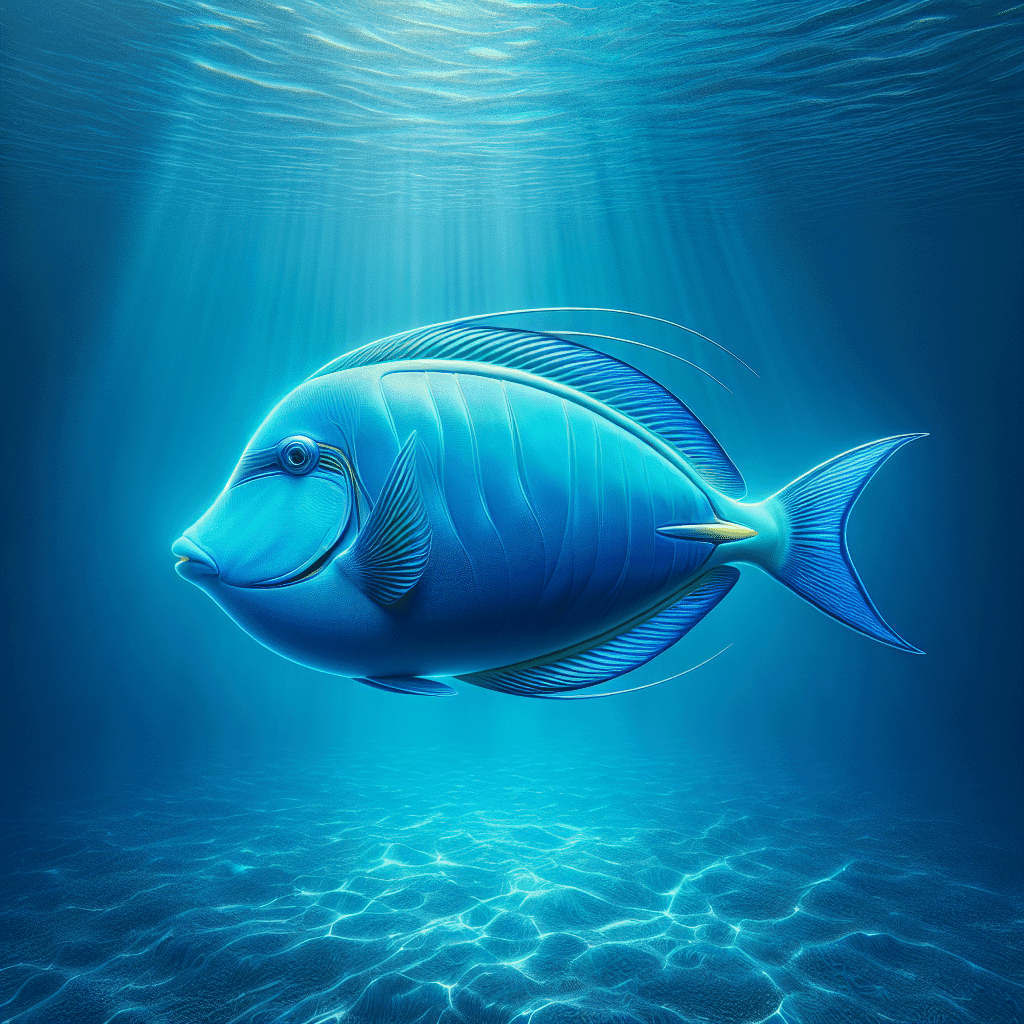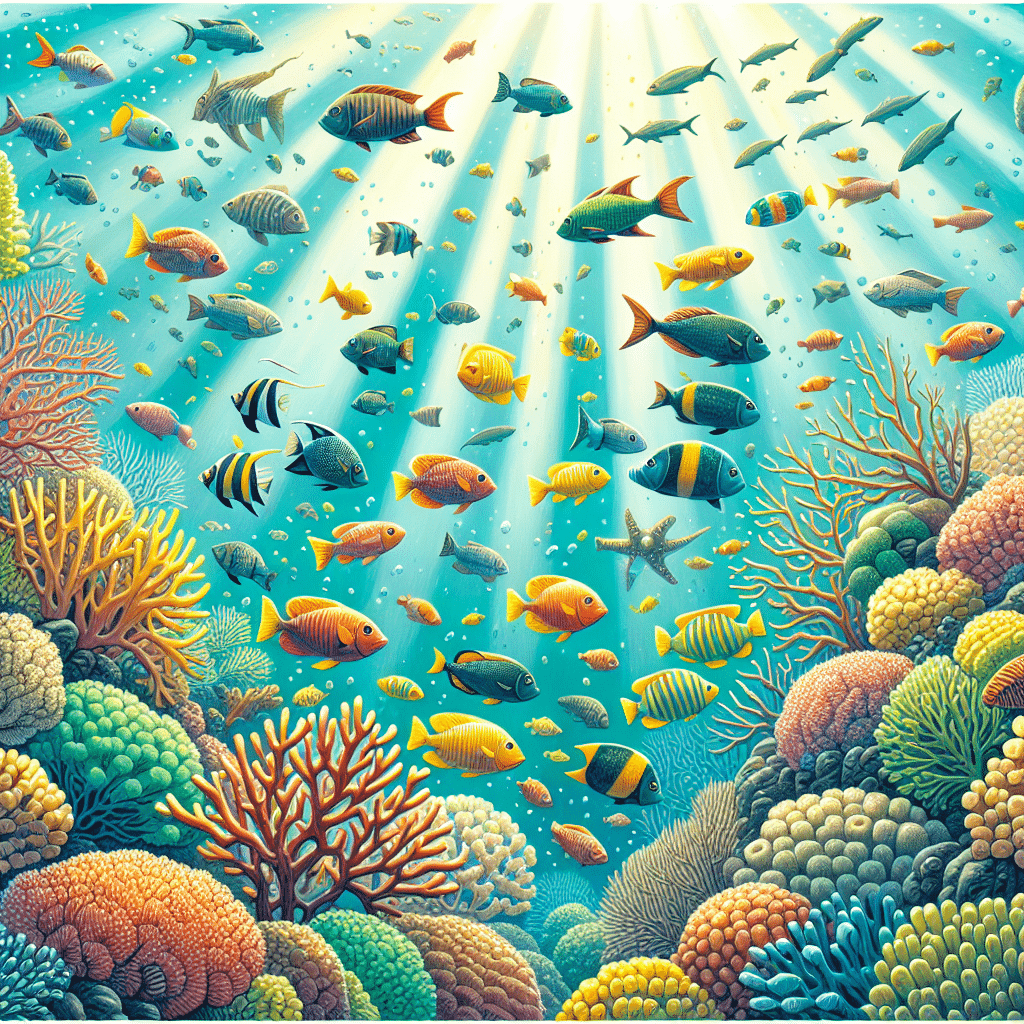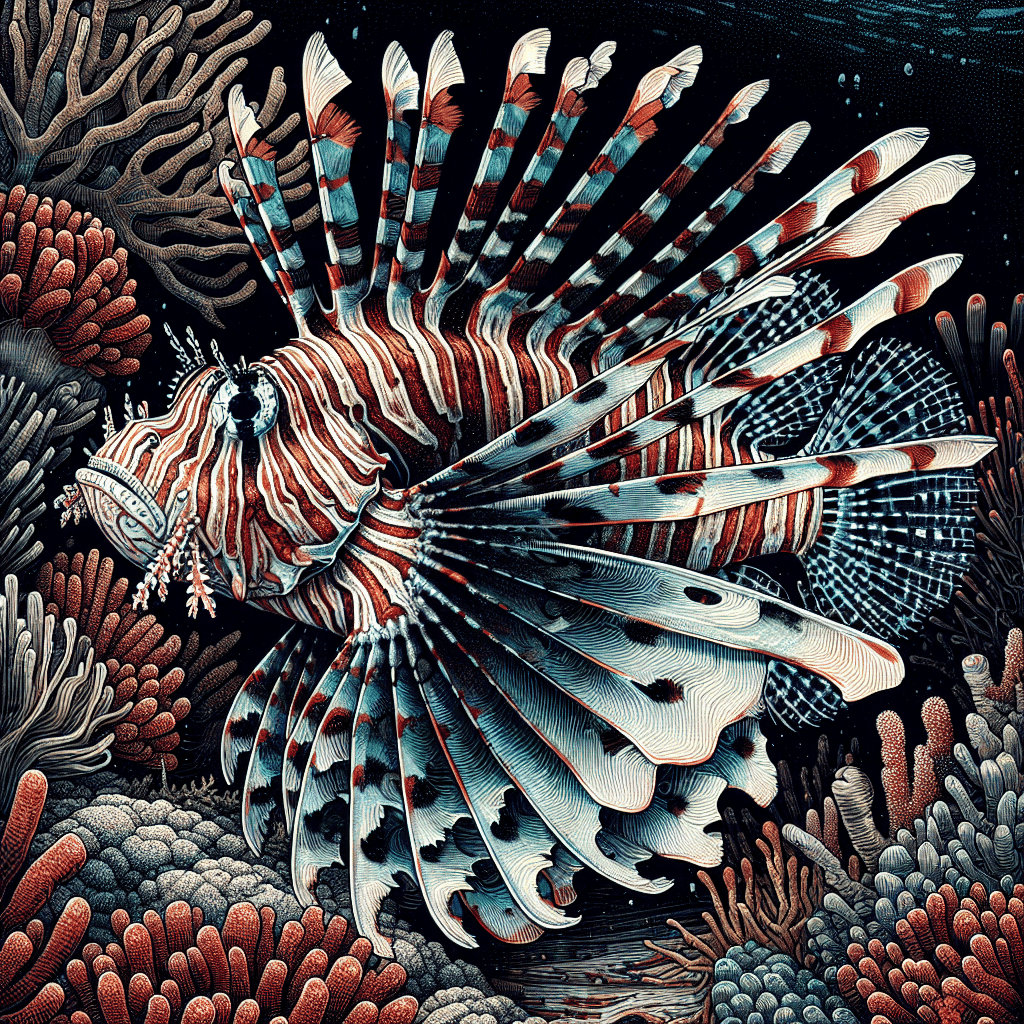Caring for Surgeonfish in Reef Tanks
Caring for surgeonfish in a reef tank can be a rewarding experience. I love watching them thrive in their environment, and providing the right care can make all the difference. Here’s how I ensure my surgeonfish are healthy and happy.
Feeding Your Surgeonfish
Feeding surgeonfish is pretty straightforward, as they thrive on a mostly vegetarian diet. I usually offer them a variety of veggies like zucchini, romaine lettuce, bok choy, broccoli, and spinach. Using a veggie clip can make feeding easier and mimic their natural grazing behavior.
Additionally, I make sure to provide prepared foods rich in algae, such as nori, seaweed sheets, and spirulina. These foods are often readily available at pet shops specializing in saltwater fish and are usually a hit with my fish.
While surgeonfish primarily feed on plant matter, they also enjoy a little variety in their diet. Occasionally, I give them meaty foods like plankton. In my aquarium, I’ve found that feeding live foods such as brine shrimp or mysis shrimp helps replicate their wild diet and keeps them engaged.
Here’s a quick summary of the types of food I provide:
| Food Type | Examples |
|---|---|
| Vegetables | Zucchini, romaine lettuce, bok choy, broccoli, spinach |
| Prepared Algae | Nori, seaweed sheets, spirulina |
| Meaty Foods | Brine shrimp, mysis shrimp |
For more information on suitable options, check out our section on marine fish.
Mimicking Natural Behaviors
Mimicking the natural behaviors of surgeonfish is crucial for their well-being. In the wild, surgeonfish browse on live rock, picking at the rock to find bits of algae to eat. To replicate this in my tank, I provide plenty of live rock and ensure there’s a good amount of algae for them to graze on. They are generally reef-safe if they are well-fed, and I enjoy watching them interact with their environment.
Surgeonfish are diurnal and social creatures, which means they are most active during the day. They seek refuge in reef crevices at night, so I make sure my tank has plenty of hiding spots. This helps them feel secure and reduces stress. By providing a natural environment, I can ensure that my surgeonfish thrive and exhibit their typical behaviors.
If you want to dive deeper into how to maintain a healthy environment for these fascinating fish, consider exploring our articles on clownfish or yellow tang.
Diet of Surgeonfish
When it comes to feeding my surgeonfish, I’ve found that a balanced diet is key to keeping them healthy and vibrant. These fish have specific dietary needs that I make sure to meet, focusing primarily on their herbivorous tendencies. Here’s how I break down their diet.
Vegetarian Diet
Surgeonfish primarily thrive on a vegetarian diet. I often feed them a variety of veggies like zucchini, romaine lettuce, bok choy, broccoli, and spinach. Using a veggie clip helps to keep these foods in place, making it easier for them to nibble away. This diet mimics their natural feeding habits, as they graze on algae and small plants in their native environments.
| Vegetable | Benefits |
|---|---|
| Zucchini | High in water content, easy to digest |
| Romaine Lettuce | Low calorie, provides roughage |
| Bok Choy | Rich in vitamins A, C, and K |
| Broccoli | Packed with fiber and nutrients |
| Spinach | Contains iron and antioxidants |
For more information on other marine fish diets, check out our article on marine fish.
Prepared Algae Foods
In addition to fresh vegetables, I also use prepared foods that are rich in algae. These can usually be found in pet shops specializing in saltwater fish. Options like nori, seaweed sheets, and spirulina are favorites among my surgeonfish. These foods not only mimic their natural diet but also provide essential nutrients that keep them healthy and active (Mom.com).
| Algae Type | Nutritional Value |
|---|---|
| Nori | High in protein and fiber |
| Seaweed Sheets | Rich in vitamins and minerals |
| Spirulina | Contains essential amino acids |
Meaty Foods for Variation
Although surgeonfish are mostly vegetarian, they enjoy the occasional meaty treat. I like to mix in some live foods like brine shrimp or mysis shrimp to replicate their wild diet. This not only adds variety but also provides essential proteins that support their overall health. These treats can be a great way to encourage feeding behavior and keep them engaged in their environment.
| Meaty Food | Frequency |
|---|---|
| Brine Shrimp | Once a week |
| Mysis Shrimp | Once a week |
| Plankton | Occasionally |
By providing a varied diet that includes both plant and animal matter, I ensure that my surgeonfish remain healthy and thrive in their reef tank environment. If you’re interested in more tips for caring for these fish, take a look at our section on marine fish or explore other fascinating species like clownfish and tang.
Unique Features of Surgeonfish
Surgeonfish are fascinating creatures that stand out in the reef tank world due to their unique features. Here are some of the most notable characteristics that make them interesting and sometimes intimidating.
Scalpel-Like Barbs
One of the most distinctive features of surgeonfish is their scalpel-like barbs located on each side of their caudal peduncle, or the base of their tail. These sharp spines serve as a defense mechanism. When threatened, a surgeonfish can use these barbs to slash at predators, inflicting serious injury. The bright colors of these spines act as a warning sign, signaling to potential threats that they should think twice before attacking. This clever design earns the surgeonfish its name, as these spines resemble surgical instruments.
Venomous Spines
In addition to their sharpness, the spines of surgeonfish can also be mildly venomous. While a sting from a surgeonfish can cause pain, redness, and swelling, it is not life-threatening. This adds another layer of protection for these fish, ensuring that any predator thinking of making a meal out of them will likely reconsider.
Habitat Preferences
Surgeonfish thrive in various marine environments, particularly coral reefs where they can find plenty of algae to graze on. They prefer shallow waters, typically between 1 to 30 meters deep, where they can easily maneuver among the coral structures. Their vibrant colors and unique shapes make them a beautiful addition to any reef tank, but it’s essential to recreate their natural habitat for them to feel comfortable and healthy.
| Feature | Description |
|---|---|
| Scalpel-Like Barbs | Sharp spines on the tail for self-defense. |
| Venomous Spines | Mildly venomous, causing pain but not lethal. |
| Habitat Preferences | Prefer shallow coral reef environments. |
These unique features of surgeonfish not only help them survive in the wild but also make them a captivating choice for aquarium enthusiasts. Understanding these characteristics is vital for anyone considering adding a surgeonfish to their marine fish collection.
Breeding and Life Cycle
Reproduction Behavior
When I think about the breeding habits of surgeonfish, it’s fascinating how they time their spawning to coincide with specific environmental conditions. For instance, the breeding of palette surgeonfish typically takes place during the cooler months, specifically from December to June in the Pacific. During these months, they exhibit increased breeding activity, which is crucial for their reproduction.
Egg Release and Hatching
Female surgeonfish are prolific when it comes to egg-laying. They can release up to 40,000 eggs during each spawning event (Critter Science). The fertilized eggs are quite remarkable, hatching within a short period—between twenty-five and twenty-eight hours after fertilization (Aquarium of the Pacific). This rapid development is essential for increasing the survival chances of the larvae in their natural habitat.
| Stage | Time Frame |
|---|---|
| Egg Release | Up to 40,000 eggs |
| Hatching Time | 25 to 28 hours after fertilization |
Lifespan in the Wild
The lifespan of surgeonfish can be quite impressive. Palette surgeonfish, also known as Paracanthurus hepatus, can live for more than 30 years in the wild, with an average lifespan of around 12 to 14 years in captivity (Aquarium of the Pacific). Their longevity is often surprising to many hobbyists, especially considering the average lifespan in aquariums is typically shorter due to varying conditions.
| Lifespan Context | Time Frame |
|---|---|
| Lifespan in the Wild | Over 30 years |
| Average Lifespan in Captivity | 12 to 14 years |
Understanding the breeding and life cycle of surgeonfish can help hobbyists like me create the best environments for these beautiful creatures in our reef tanks. For more insights on caring for these fish, don’t forget to check out other articles on marine fish and specific species like the blue tang or yellow tang.
Surgeonfish Species
In this section, I’ll dive into two popular species of surgeonfish: the Palette Surgeonfish and the Ocean Surgeonfish. Both species are fascinating and can make great additions to a reef tank.
Palette Surgeonfish
The Palette Surgeonfish, also known as Paracanthurus hepatus, is one of the most recognizable surgeonfish, often admired for its vibrant colors and unique patterns. They can be found in the Indo-Pacific Ocean, ranging from East Africa to Kiribati, and north to southern Japan. They also inhabit the southern Great Barrier Reef, Samoa, and New Caledonia Aquarium of the Pacific.
| Feature | Description |
|---|---|
| Size | 5 to 15 inches (12 to 38 centimeters), average size 10 to 12 inches (25 to 31 centimeters) |
| Diet | Omnivore; feeds on zooplankton and algae Aquarium of the Pacific |
| Lifespan | Over 30 years in the wild; average lifespan of 12 to 14 years Aquarium of the Pacific |
| Breeding | Breeds during cooler months (December to June); females can release up to 40,000 eggs Aquarium of the Pacific |
These surgeonfish are generally peaceful but may be territorial, especially in smaller tanks. They thrive in environments with plenty of hiding spots and open swimming areas.
Ocean Surgeonfish
The Ocean Surgeonfish, known scientifically as Acanthurus bahianus, is another species that captures the interest of many reef tank hobbyists. This fish is typically found in shallow waters of the Caribbean and the western Atlantic Ocean. They are known for their vibrant blue and yellow coloration, which can brighten up any aquarium setup.
| Feature | Description |
|---|---|
| Size | Can reach up to 12 inches (30 centimeters) |
| Diet | Primarily herbivorous; eats algae and plant materials, but may also consume small invertebrates |
| Lifespan | Can live for several years in captivity, typically around 5 to 10 years |
| Behavior | Often found in schools; can be territorial during breeding |
The Ocean Surgeonfish is known for its social behavior, often seen swimming in groups. They require ample space and a well-maintained reef tank to thrive.
Both the Palette and Ocean Surgeonfish have unique characteristics that make them appealing to keep in a marine fish aquarium. It’s essential to provide them with the right care, including proper diet and habitat, to ensure they flourish in your reef tank. If you’re interested in learning about more fish species, feel free to check out my articles on tang and clownfish.
Habitat and Distribution
Natural Environment
Surgeonfish are exclusively saltwater fish that thrive in tropical and subtropical seas, including the Atlantic, Pacific, and Indian Oceans, but they do not inhabit the Mediterranean Sea. They are commonly found in coral reefs, inshore rocky areas, and grassy habitats, where they play a vital role in the ecosystem. These fish are primarily herbivorous and use their small mouths and incisor-like teeth to graze on algae and small plants, helping to prevent thick mats of algae from overtaking corals. This behavior not only maintains the health of the reef but also contributes to the production of sand sediments around these vibrant environments.
| Habitat Type | Description |
|---|---|
| Coral Reefs | Rich in biodiversity, providing food and shelter. |
| Inshore Rocky Areas | Offers protection and grazing opportunities. |
| Grassy Habitats | Supports a variety of small marine life. |
Geographic Range
Surgeonfish have a broad geographic distribution. The ocean surgeonfish can be found from Massachusetts down the Atlantic coast to Bermuda, the Gulf of Mexico, the Caribbean, and all the way to Brazil (South Carolina Aquarium). On the other hand, the palette surgeonfish, also known as blue tang, inhabits the Indo-Pacific Ocean, ranging from East Africa to Kiribati, northern Japan, and southern Great Barrier Reef (Aquarium of the Pacific).
| Surgeonfish Species | Geographic Range |
|---|---|
| Ocean Surgeonfish | Massachusetts to Brazil, including Bermuda and the Caribbean |
| Palette Surgeonfish | Indo-Pacific Ocean, from East Africa to Kiribati |
These stunning fish can often be seen in large schools, adding to the vibrant underwater scenery that attracts divers and snorkelers alike. Their striking colors and patterns make them a popular choice for aquarium enthusiasts, reflecting the beauty of their natural habitats. If you’re interested in learning more about other reef fish, check out our articles on marine fish or specific types like blue tang and clownfish.
Interaction with Coral Reefs
Surgeonfish play a significant role in maintaining the health of coral reef ecosystems. Their interactions with these environments are crucial for both the fish themselves and the overall health of the reef.
Role in Ecosystem
As herbivores, surgeonfish primarily feed on algae and small invertebrates found on the reef. This diet helps prevent thick mats of algae from forming, which can smother corals and disrupt the delicate balance of the reef ecosystem. By grazing on these algae, surgeonfish contribute to the production of sand sediments, which can support other marine life (Facts and Details). Their feeding habits not only aid in maintaining the health of the corals but also promote biodiversity within the reef.
| Surgeonfish Species | Primary Diet | Ecosystem Role |
|---|---|---|
| Ocean Surgeonfish | Green and brown algae | Prevents algae overgrowth |
| Palette Surgeonfish | Various algae and small invertebrates | Maintains coral health |
Surgeonfish are also known for their social behavior. They often form schools, which can help protect them from predators while they graze. Their vibrant colors and patterns make them a popular sight for divers and snorkelers, enhancing the appeal of coral reefs as recreational areas.
Grazing Behavior
Surgeonfish exhibit specific grazing behaviors that reflect their adaptations to reef life. They are diurnal, meaning they feed during the day and seek refuge in reef crevices at night for protection. Their small mouths and incisor-like, lobate teeth are perfectly designed for probing the reef for food (Facts and Details). This behavior not only allows them to feed efficiently but also plays a vital role in shaping the reef environment.
Their active grazing helps to keep algae populations in check, allowing corals to thrive. Without surgeonfish, algae could overgrow and outcompete corals for space and resources. This grazing behavior is essential for the sustainability of the reef ecosystem, highlighting the interconnectedness of marine life.
In conclusion, the interactions of surgeonfish with coral reefs underscore their importance in maintaining ecological balance. As a reef tank hobbyist, understanding these dynamics can inform better care practices for these unique and colorful fish. For more insights on other marine species, consider exploring information on marine fish or specific species like the blue tang and clownfish.
Threats and Conservation
Human Utilization
Surgeonfish are not a primary target for commercial fishermen; however, they are popular in the pet trade. Many hobbyists, including myself, enjoy keeping these colorful fish in reef tanks. The palette surgeonfish, for example, has been harvested for display in both commercial and private aquaria for many years, connecting people with marine life and ecosystems (South Carolina Aquarium). While the venomous caudal spine of the palette surgeonfish can deliver a painful but minor wound to humans, this doesn’t deter their popularity among fish enthusiasts.
Despite the harvesting of surgeonfish for aquaria, the palette surgeonfish is not currently considered threatened. It has not been evaluated by major conservation organizations like the International Union for Conservation of Nature (IUCN) or the US Fish and Wildlife Service (Facts and Details). Similarly, the ocean surgeonfish is still regarded as common and faces no special conservation concerns.
Overfishing Concerns
Overfishing has impacted certain wild populations of surgeonfish, although the species as a whole is not in critical danger. The harvesting pressures primarily occur due to their popularity in the aquarium trade. While some species may face challenges, others, like the ocean surgeonfish, remain abundant and stable. The role of surgeonfish in reef ecosystems is vital, as they help control algae growth, which can otherwise smother corals.
Here’s a table summarizing the conservation status of surgeonfish species:
| Surgeonfish Species | Conservation Status |
|---|---|
| Palette Surgeonfish | Not threatened, not evaluated |
| Ocean Surgeonfish | Common, no special concerns |
Maintaining the balance of reef ecosystems is crucial, and as a responsible hobbyist, I always advocate for sustainable practices in the aquarium trade. Understanding and supporting the health of our marine environments can help ensure that surgeonfish and their habitats thrive for future generations. If you’re interested in more marine life, check out our articles on marine fish and specific species like tang and clownfish.



